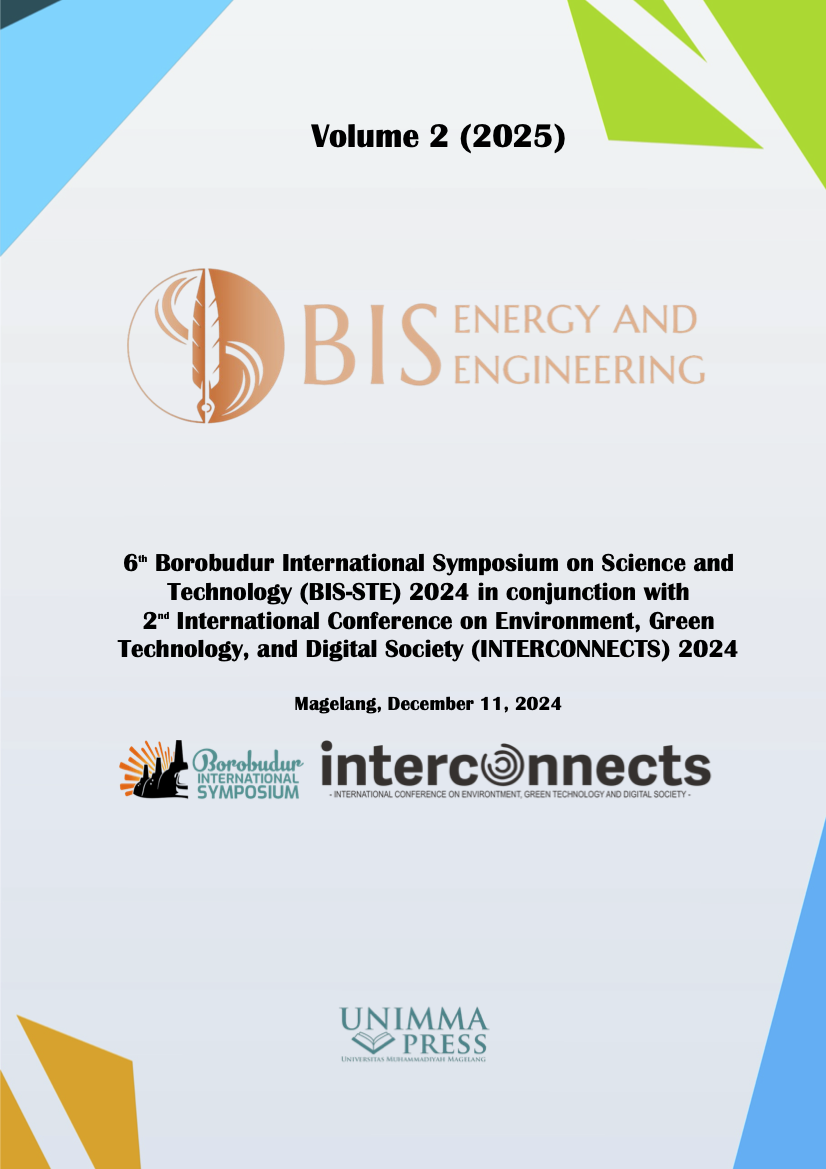A review of combustion in waste incinerator and its emissions
Keywords:
Waste incinerator, Emissions control, Waste-to-energyAbstract
Nowadays, the waste problem has become a national issue that has to be handled seriously. Every member of society should be responsible for waste sorting into organic, non-organic, and poisonous waste. Organic waste, including biomass waste from wood and food waste, can be utilized as fertilizer and animal feed. Non-organic trash, such as plastic bottles, other plastics, and used clothing, can be converted into new products or recycled. The purpose of this study was to look at the incinerator machine utilized at the waste processing site and the exhaust gas produced. The method of this study is a literature review, which entails gathering and assessing publications regarding the ultimate waste processing system. The findings obtained were that waste-to-energy (WtE) incinerators are frequently a useful option. These incinerators are intended not only to decrease waste volume but also change it into usable energy, such as electricity or heat. The incinerators are often use modern pollution control systems to reduce emissions of pollutants such as NOx, SO2, and particulate matter. High caloric value in waste can generate more heat during combustion. It is important to have high temperature in incinerator to ensure complete combustion, reducing volume of waste and eliminating the combustion.
References
1. Bhadra, J.; DLima, A.L. Classification of Organic and Recyclable Waste for Sustainable Development Using Resnet50 Model BT - 2023 International Conference on Advances in Electronics, Communication, Computing and Intelligent Information Systems (ICAECIS).; Bangalore, India, 2023; pp. 78–83.
2. Hasan, Z.; Lateef, M. Transforming Food Waste into Animal Feeds: An in-Depth Overview of Conversion Technologies and Environmental Benefits. Environ. Sci. Pollut. Res. 2024, 31, 17951–17963, doi:10.1007/s11356-023-30152-0.
3. Bhikuning, A.; Priambodo, B.; Sukarnoto, T. Potential Waste to Energy in Kota Tua-Jakarta BT - AIP Conference Proceedings.; 2023; Vol. 2706.
4. Sistem Informasi Pengelolaan Sampah Nasional (SIPSN) 2024.
5. Liu, X.; Zhu, G.; Asim, T.; al., et Design of a Novel α-Shaped Flue Gas Route Flame Incinerator for the Treatment of Municipal Waste Materials. Waste and Biomass Valorization 2024, 15, 2483–2498, doi:10.1007/s12649-023-02291-5.
6. Denda, T.; Nakayama, T.; Kano, S. Development of a Waste Incinerator Based on High-Temperature Air Combustion Technology. J. Mater. Cycles Waste Manag. 2023, 25, 3256–3269.
7. Jang, H.N.; Choi, M.K.; Choi, H.S. Economical Operation and Hazardous Air Pollutant Emissions of Biodegradable Sludge Combustion Process in Commercial Fluidized Bed Plant. Energies 2024, 17, 542, doi:10.3390/en17020542.
8. Zakaria, R.; Abdul Aziz, H.; Lawrence, K.W.; Yung, T.H. Combustion and Incineration BT - Handbook of Environmental Engineering. In; 2023; Vol. 23, pp. 345–397.
9. Europe, Z.W. Hidden Temperature: Emissions Implications of Temperatures in the Post-Combustion Zone of Waste Incinerators 2020.
10. Sikder, S.; Toha, M.; Rahman, M.M. Municipal Solid Waste Incineration: An Incredible Method for Reducing Pressures on Landfills BT - Technical Landfills and Waste Management. In; Souabi, S., Anouzla, A., Eds.; Springer: Cham, 2024.
11. Kumar, R.; Gupta, S.; Singh, P.K. Advanced Waste Incineration Technologies for Sustainable Waste Management. J. Environ. Manage. 2023, 310, 142–158.
12. Kim, Y.; Lee, L.; Park, H. Enhancing Efficiency in Waste Incineration through Calorific Value Optimization. Waste Manag. Res. 2023, 41, 1234–1245.
13. Shah, J.; Kamat, S. A Method for Waste Segregation Using Convolutional Neural Networks BT - 2022 Second International Conference on Advances in Electrical, Computing, Communication and Sustainable Technologies (ICAECT).; Bhilai, India, 2022; pp. 1–5.
14. Dhanbhar, A. Improve the Calorific Value of Municipal Solid Waste By Adding Additive Material For Incineration Process. IOSR J. Mech. Civ. Eng. 2018, 15, 77–78.
15. Orobio, B.A.P.; Girón-Bol, L.M.; Gómez-Muñoz, D.F.; Marmolejo-Rebellón, L.F.; Torres-Lozada, P. Thermal Pre-Treatment as a Tool for Energy Recovery from Food Waste through Anaerobic Digestion. Effect on Kinetic and Physicochemical Characteristics of the Substrate. Environ. Technol. Innov. 2021, 21, 101262, doi:10.1016/j.eti.2020.101262.
16. Falconi, F.; Guillard, H.; Capitaneanu, S.; Raïssi, T. Control Strategy for the Combustion Optimization for Waste-to-Energy Incineration Plant. IFAC-PapersOnLine 2020, 53, 13167–13172.
17. Zhu, M.; Zhang, Y. Intelligent Control System and Operational Performance Optimization of a Municipal Solid Waste Incineration Power Plant. Fuel Process. Technol. 2024, 266, 108162.
18. Ohnishi, S.; Fujii, M.; Ohata, M.; Rokuta, I.; Fujita, T. Efficient Energy Recovery through a Combination of Waste-to-Energy Systems for a Low-Carbon City. Resour. Conserv. Recycl. 2018, 128, 394–405.
19. Bhikuning, A. Calculating Thermodynamic Properties of Dioxin Formation by Gaussian’98 BT - Proceeding The 11th International Conference on QIR (Quality in Research) Faculty of Engineering University of Indonesia.; 2009; pp. 611–617.
20. Bhikuning, A.; Ishibashi, N.; Ishihara, Y. Analysis of Chemical Equilibrium in Congener Patterns of PCDD/Fs BT - Proceedings of the Japan Society of Waste Management.; 2002; Vol. 13, pp. 1282–1284.
21. Nagata, K. State-of-the-Art of PCDD/PCDF Emission Control for Municipal Waste Incinerators. Waste Manag. Res. 1992, 3, 217–237, doi:10.3985/wmr.3.217.
22. Mandala, P.C.; Warmadewanthi, I.D.A.A.; Aniza, R. Study of Optimalization Solid Waste of Refuse Derives Fuel (RDF) at Landfill Griyo Mulyo, Sidoarjo District. Indones. J. Urban Environ. Technol. 2024, 7, 30–41.
23. Kong, S.; Sun, J.; Cheng, X. Emission Control of Pollutants in Waste Incineration Power Generation Process. Glob. J. Energy Environ. 2019, 1, 1–9, doi:10.28933/gjee-2019-10-1805.
Downloads
Published
Conference Proceedings Volume
Section
License

This work is licensed under a Creative Commons Attribution-NonCommercial 4.0 International License.

